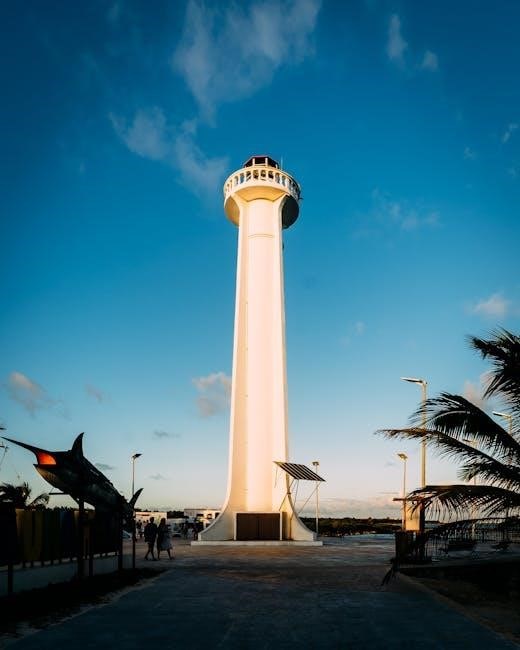Revising with a style guide ensures consistency and clarity, acting as an “editing bible” for professional editors. It’s a crucial step, encompassing content, style, and structure.
Effective revision, guided by established conventions, elevates writing quality and credibility, aligning with specific academic or professional standards.
The Importance of Style Guides in Revision
Style guides are fundamentally important during revision, providing a standardized framework for consistency in formatting, citation, and language use. They transform a subjective process into an objective one, ensuring clarity and professionalism.
Adhering to a style guide—like APA, MLA, or Chicago—demonstrates attention to detail and respect for established academic or professional conventions. This meticulous approach enhances credibility and allows readers to focus on the content, rather than being distracted by inconsistencies.
Essentially, a style guide acts as an “editing bible,” guiding editors and writers alike to maintain a unified voice and presentation. Ignoring these guidelines can lead to errors, misinterpretations, and a diminished overall impact of the work.
Understanding Different Types of Style Guides (APA, MLA, Chicago)
APA (American Psychological Association) style is prevalent in social sciences, emphasizing author-date citations and a focus on recency. MLA (Modern Language Association), common in humanities, utilizes in-text citations with page numbers and a “Works Cited” list.
Chicago style offers two systems: notes and bibliography (humanities) and author-date (sciences). It’s known for its comprehensive coverage of grammar, punctuation, and formatting. Each guide dictates specific rules for headings, fonts, and referencing sources.
Choosing the correct style guide is crucial; it depends on the discipline and publication requirements. Revising requires meticulous attention to these differences, ensuring all elements—from citations to headings—conform to the chosen standard. Understanding these nuances is key to a successful revision.

Pre-Revision Preparation
Before editing, a break allows for objective review. Revisiting your purpose and audience ensures the writing effectively communicates its message and meets expectations.
Taking a Break for Objective Review
Stepping away from your writing is paramount before beginning the revision process. This deliberate pause allows for a crucial shift in perspective, enabling a more objective assessment of your work. After extended periods of writing, it’s easy to become accustomed to your own phrasing and overlook errors or inconsistencies.
A break – even a short one – helps to distance you emotionally and intellectually from the text. This distance facilitates a clearer evaluation of the content’s clarity, logical flow, and adherence to the chosen style guide. Returning with fresh eyes allows you to identify areas needing improvement with greater accuracy, ultimately enhancing the overall quality of your revised document.
Revisiting Your Purpose and Audience
Before diving into detailed revisions, re-establish your writing’s core purpose. What message are you trying to convey? How does your content fulfill that objective? Simultaneously, reconsider your intended audience. Are you writing for specialists, general readers, or a specific demographic?
Ensuring alignment between purpose and audience is vital. A clear understanding of both informs your style choices, tone, and level of detail. Revising with this in mind guarantees your writing effectively communicates with its intended recipients. A style guide helps maintain consistency, but purpose and audience dictate how that style is applied for maximum impact and comprehension.

Macro-Level Revision: Structure and Organization
Macro-level revision focuses on the overall document structure, ensuring logical flow and cohesive paragraphs. A strong structure enhances readability and comprehension.
Checking Overall Document Structure
Evaluating the document’s structure is paramount during macro-level revision. Begin by assessing if the introduction clearly establishes the topic and scope, and if the conclusion effectively summarizes key points.
Ensure a logical progression of ideas, with each section building upon the previous one. Consider if the headings and subheadings accurately reflect the content they introduce, providing a clear roadmap for the reader.
Look for any abrupt shifts in topic or gaps in the argument. A well-structured document maintains a consistent focus and guides the reader seamlessly through the information. This initial assessment sets the foundation for more detailed revisions;
Strengthening Paragraph Cohesion and Flow
Paragraphs should function as unified thought units, each contributing to the overall argument. Examine topic sentences to ensure they clearly state the main idea of each paragraph.
Transition words and phrases are vital for creating a smooth flow between sentences and paragraphs, signaling relationships like cause and effect, contrast, or addition.
Check for logical connections between ideas within each paragraph; ensure sentences aren’t disjointed or abruptly changing topics. Eliminate any unnecessary repetition or redundancy. A cohesive paragraph enhances readability and comprehension, guiding the reader effortlessly through your ideas.
Ensuring Logical Argument Progression

A strong argument unfolds logically, building upon established points to reach a compelling conclusion. During revision, map out the overall structure of your argument – does each section naturally lead to the next?
Verify that evidence presented supports your claims and is presented in a persuasive order. Consider using outlining techniques to visualize the flow of ideas and identify any gaps or inconsistencies.
Ensure counterarguments are addressed fairly and effectively, strengthening your position. A clear, logical progression demonstrates critical thinking and enhances the persuasiveness of your writing, adhering to style guide expectations.

Micro-Level Revision: Style and Mechanics
Micro-level revision focuses on details: grammar, punctuation, and adherence to the chosen style guide’s rules for formatting, tone, and word choice.
Adhering to the Chosen Style Guide’s Formatting Rules
Formatting consistency is paramount during micro-level revision. A style guide dictates specifics – from font type and size to margins and spacing – ensuring a polished, professional document.
Carefully check headings, subheadings, and any visual elements against the guide. Dates, numbers, and abbreviations also require meticulous attention to style-specific conventions.
Professional editors rely on these guides, making edits that strictly follow established rules. Ignoring these details can undermine credibility and detract from the overall quality of the work. Consistent application of formatting rules demonstrates attention to detail and respect for established standards.
Consistency in Headings, Subheadings, and Font Usage
Maintaining consistency in headings, subheadings, and font usage is vital for readability and a professional appearance. Style guides prescribe specific hierarchical structures and formatting for these elements.
Ensure all headings of the same level share identical formatting – font size, weight (bold, italics), and capitalization. Subheadings should follow a clear, logical progression, mirroring the document’s organization.
Font choices are also often dictated by the style guide. Adhering to these rules creates visual harmony and signals attention to detail. Inconsistencies disrupt the reader’s flow and can diminish the work’s credibility, highlighting the importance of meticulous review.
Grammar and Punctuation Check – A Style Guide Perspective
A grammar and punctuation check, viewed through a style guide’s lens, transcends basic error correction. Style guides often prescribe specific rules regarding comma usage, hyphenation, and preferred phrasing.
For example, APA, MLA, and Chicago styles may differ on the proper formatting of dates or the use of the serial comma. A thorough revision necessitates referencing the chosen guide to ensure adherence to these nuanced rules.
Beyond correctness, style guides promote clarity and conciseness. Eliminating ambiguity and ensuring grammatical precision enhances the overall quality and professionalism of the writing, demonstrating careful attention to detail.
Word Choice and Tone – Maintaining Style Guide Standards
Revising for word choice and tone requires aligning with the specific standards dictated by the chosen style guide. Some guides favor formal, academic language, while others permit a more conversational tone.
Avoiding jargon and ambiguous terms is paramount, ensuring clarity for the intended audience. Style guides often provide guidance on preferred terminology and discourage biased or overly subjective language.
Maintaining consistency in vocabulary and phrasing throughout the document is crucial. A substantive edit reviews structural and textual elements, ensuring the writing’s voice remains appropriate and professional, reflecting the guide’s established conventions.
Eliminating Jargon and Ambiguity
Revising to eliminate jargon and ambiguity is vital for clear communication. Style guides often emphasize accessibility, advocating for language understandable to the intended audience. Specialized terminology should be defined or replaced with simpler alternatives when possible.
Ambiguous phrasing can lead to misinterpretation; therefore, sentences must be precise and unambiguous. A thorough review ensures that all concepts are presented in a straightforward manner, avoiding potentially confusing language.
Professional editors prioritize clarity, scrutinizing text for vague terms or overly complex sentence structures. This process aligns with the principles of effective writing, enhancing the document’s overall readability and impact.

Specific Style Guide Elements to Check
Style guides dictate specific rules for citations, formatting, and referencing. Careful review of these elements—APA, MLA, or Chicago—ensures adherence to established standards.
APA Style: Citations and References
APA style demands meticulous attention to in-text citations and the reference list. Verify author-date format consistency throughout the document, ensuring each source cited within the text has a corresponding entry in the references.
Double-check the reference list for accurate details: author names, publication year, title, and source information. Pay close attention to indentation and alphabetical ordering. APA requires a hanging indent for each reference entry.
Ensure DOI or URL inclusion when available. Confirm that all sources are credible and appropriately cited to avoid plagiarism. Consistent application of APA guidelines strengthens academic integrity and clarity.
MLA Style: In-Text Citations and Works Cited
MLA style prioritizes author-page number in-text citations. During revision, confirm each source mentioned within the text has a corresponding parenthetical citation, accurately reflecting the page number. Verify consistency in citation format throughout the paper.
The “Works Cited” page requires careful scrutiny. Ensure entries are alphabetized by the author’s last name and formatted precisely according to MLA guidelines, including proper punctuation and indentation.
Check for accurate publication details – author, title, publisher, and date. Confirm that all sources are relevant and reliably cited to maintain academic honesty and provide readers with clear source information.
Chicago Style: Footnotes and Bibliography
Chicago style utilizes footnotes or endnotes for citations, demanding meticulous attention to detail during revision. Verify each note’s accuracy, ensuring it corresponds to the relevant text and provides complete publication information.
Footnote formatting differs from bibliography entries; confirm adherence to Chicago’s specific rules for each. Check for consistent use of abbreviations and punctuation within both footnotes and the bibliography.
The bibliography must be alphabetized and formatted precisely, including proper indentation and capitalization. Ensure all sources cited in the text are included, and that all bibliography entries are accurately and completely represented.

Advanced Revision Techniques
Substantive editing, copyediting, and proofreading represent escalating levels of refinement, focusing on content, accuracy, and final error checks for polished results.
Substantive Editing: Content, Style, and Meaning
Substantive editing delves deeply into the core of your work, evaluating content, style, structure, and overall meaning. This isn’t merely correcting grammar; it’s a holistic review of the piece’s effectiveness. It examines whether the arguments are logical, the information is accurate, and the narrative flows seamlessly.
During this phase, editors assess if the content fulfills its intended purpose and resonates with the target audience. They may suggest significant revisions to improve clarity, strengthen arguments, or reorganize sections for better impact. It reviews both structural and textual elements, ensuring the draft content is compelling and coherent, adhering to the chosen style guide’s principles.
Copyediting: Accuracy and Consistency
Copyediting focuses on meticulous accuracy and unwavering consistency throughout your document. This stage goes beyond substantive edits, concentrating on grammar, punctuation, spelling, and factual correctness. It ensures adherence to the specified style guide – whether Chicago, MLA, or APA – regarding formatting of dates, numbers, and citations.
A copyeditor verifies that all elements align with established conventions, creating a polished and professional final product. They scrutinize every detail, from headings and subheadings to font usage, ensuring uniformity. This process includes checking the dictionary of reference and the style guide, eliminating errors and maintaining a cohesive voice.
Proofreading: Final Error Check
Proofreading represents the last line of defense against errors before publication. It’s a final, detailed review focused on catching any remaining mistakes missed during previous stages – substantive editing and copyediting. This isn’t about re-writing; it’s about identifying typos, formatting inconsistencies, and minor grammatical errors.
Crucially, proofreading confirms that all corrections from earlier edits have been accurately implemented and that the document flawlessly adheres to the chosen style guide. It’s a surface-level check, ensuring visual appeal and professional presentation. A fresh perspective is vital, as familiarity can lead to overlooking subtle errors.

Tools for Revising with a Style Guide
Grammar and style checkers like Grammarly and ProWritingAid assist in identifying errors, while specialized tools ensure adherence to specific style guide rules.
Grammar and Style Checkers (Grammarly, ProWritingAid)
Grammar and style checkers, such as Grammarly and ProWritingAid, are invaluable tools during the revision process. They automatically identify potential errors in grammar, punctuation, and spelling, offering suggestions for improvement.
However, it’s crucial to remember these tools aren’t foolproof. They may not always recognize nuanced style preferences dictated by a specific style guide. Therefore, always critically evaluate their suggestions.
These platforms can flag inconsistencies in tone, word choice, and sentence structure, helping maintain a consistent voice throughout your document. They also assist in identifying instances of passive voice or overly complex phrasing, promoting clarity and conciseness.
Utilize them as a first pass, but always supplement with a thorough manual review, referencing your chosen style guide for definitive guidance.
Style Guide Specific Tools and Resources
Beyond general grammar checkers, numerous tools cater specifically to individual style guides. For APA Style, resources like the APA Style and Grammar Guidelines offer detailed explanations and examples. Similarly, the MLA Handbook is essential for MLA compliance.
Many universities provide access to online style guides and citation generators. Purdue OWL (Online Writing Lab) is a widely recognized, free resource covering APA, MLA, Chicago, and more.
Dedicated software, like Citation Machine, assists with creating accurate citations and bibliographies. Exploring publisher-specific resources is also beneficial, as they often offer templates and guidelines aligned with their requirements.
Leveraging these specialized tools streamlines the revision process, ensuring adherence to the nuances of your chosen style.

Creating Your Own Style Guide
Defining core preferences and documenting specific rules—like date formats or preferred spellings—establishes consistency. This tailored guide enhances clarity and streamlines editorial workflows.
Defining Core Style Preferences
Establishing foundational style choices is paramount when crafting a bespoke guide. This begins with fundamental decisions regarding voice – formal or informal, active or passive. Consider preferred punctuation rules, specifically regarding serial commas and em dashes.
Next, determine consistent approaches to numbers (digits versus words) and abbreviations. Specify guidelines for headings and subheadings, including capitalization and font styles.
Crucially, define how to handle potentially ambiguous elements like contractions and possessives. Documenting these core preferences ensures uniformity across all content, minimizing inconsistencies and fostering a polished, professional presentation. This proactive step streamlines the revision process significantly.
Documenting Specific Rules and Conventions
Beyond core preferences, detailed documentation of specific rules is essential. This includes precise guidelines for citations – whether APA, MLA, or Chicago – outlining formatting for books, articles, and online sources.
Specify rules for handling quotations, including length, indentation, and attribution. Detail preferred methods for listing items (bullet points versus numbered lists). Address formatting of dates, times, and addresses, ensuring consistency throughout.
Include a glossary of commonly misused words or phrases, alongside preferred alternatives; A well-documented style guide acts as a central reference point, minimizing subjective interpretations and promoting clarity during revision and editing processes.

Editorial Workflow and Style Guide Integration
Integrating style guide checks into each editing phase—from substantive edits to proofreading—ensures consistency. Clear communication with writers is vital for successful implementation.
Integrating Style Guide Checks into the Editing Process
Successfully incorporating a style guide requires a phased approach within the editorial workflow. Begin with substantive editing, assessing content and structure through the lens of the chosen guide. This ensures foundational alignment before focusing on finer details.
Next, during copyediting, meticulously verify formatting, citations, and mechanics against the style guide’s rules. Utilize grammar and style checkers as initial tools, but always confirm their suggestions manually. Finally, proofreading serves as the last line of defense, catching any lingering inconsistencies or errors.
Regularly referencing the style guide throughout each stage minimizes revisions and maintains a unified voice. This systematic integration streamlines the process and guarantees a polished, professional final product.
Collaboration and Communication with Writers
Effective revision isn’t solely an editorial task; it demands strong collaboration with writers. Clearly communicate the style guide’s requirements before the writing process begins, providing resources and examples for reference. During revision, offer constructive feedback, explaining why changes are necessary based on the guide’s rules.
Avoid simply correcting errors; instead, focus on educating writers to understand and apply the style guide independently. Encourage questions and open dialogue to foster a learning environment. A collaborative approach minimizes misunderstandings and promotes consistent adherence to stylistic conventions.
Ultimately, this partnership elevates the quality of the work and empowers writers to improve their skills.









































































